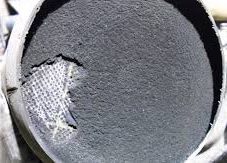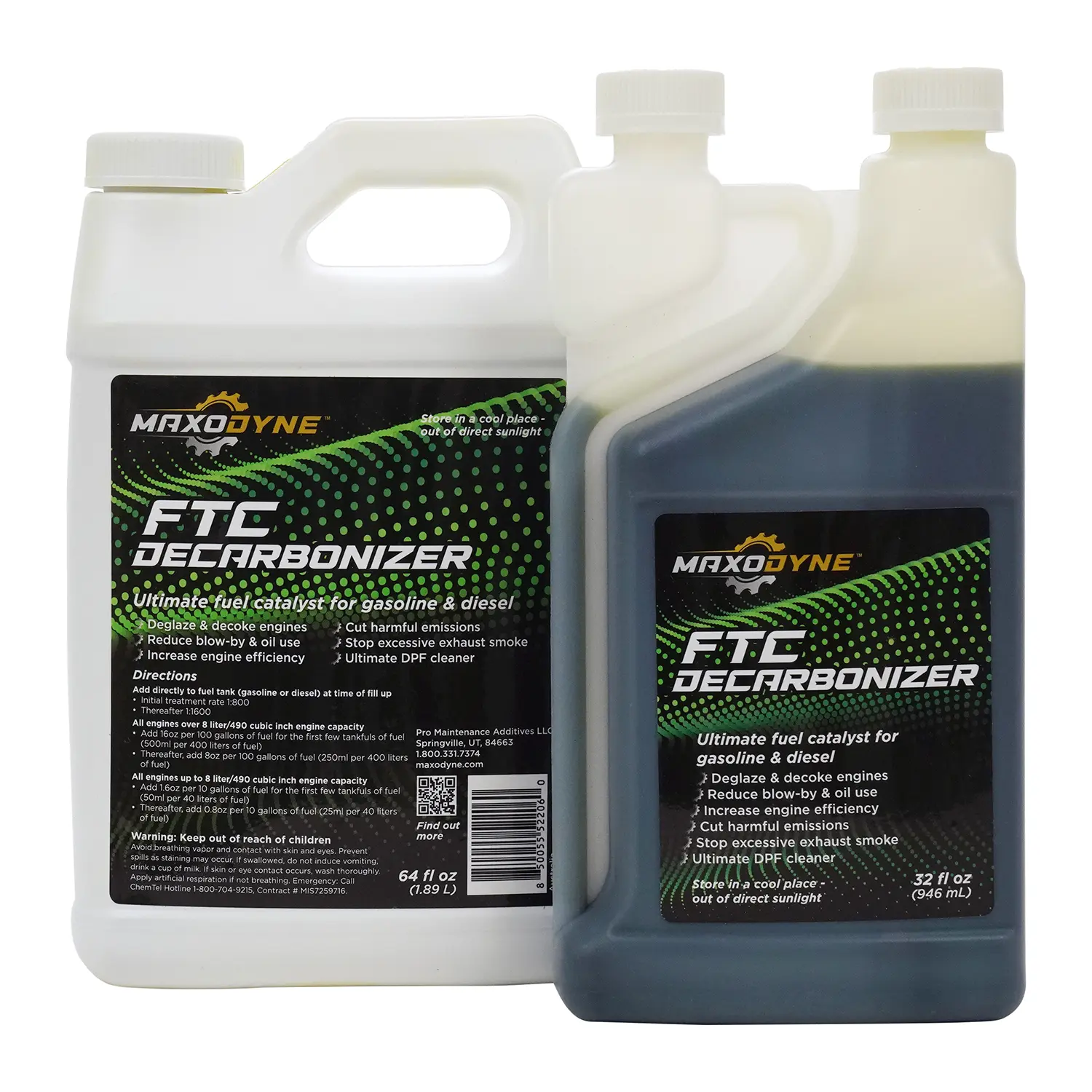Diesel Particulate Filter Problems
– and how to solve them
Most modern diesel engines are now fitted with Diesel Particulate Filters (DPF) to further reduce noxious exhaust emissions. Although this is a great step forward in reducing toxic chemicals in our atmosphere, DPFs are a band-aid remedy only, and with this technology comes a list of problems that must be overcome to maintain the integrity of each DPF system.
Some of the problems which can progressively develop are:
 The number of ‘forced regenerations’ increase, requiring the vehicle to be parked up for 20 minutes or more at a time, to burn off the soot under higher fuel usage conditions
The number of ‘forced regenerations’ increase, requiring the vehicle to be parked up for 20 minutes or more at a time, to burn off the soot under higher fuel usage conditions- Where such regeneration cycles have become ineffective, manual DPF cleaning or replacement of damaged units is required; both expensive exercises
- Some of the excess fuel required for regenerations gets past the piston rings into the engine oil. This causes excessive fuel dilution of the oil, which in turn significantly decreases the critical lubrication effect of the engine oil
- Crankcase oil should be free of fuel, and levels above as little as 2% are unacceptable. In practice, fuel dilution of up to 50% is occurring, and this will destroy engines in a very short time
- Diesel soot backing up into the engine, causing damage to the turbocharger, fuel injectors and EGR solenoid
- Cracked DPF’s
The Real, Long Term Solution to Diesel Particulate Filter Problems
The solution to these problems is to get to the root cause and eliminate the main issue. The answer is to clean up the fuel burn, rather than ‘after treat’ it with a DPF. A clean fuel burn will produce less soot; the soot that normally accumulates and blocks DPF’s.
Proven over decades with all types of diesel engines including diesel-powered cars and light trucks, trucks, semi’s, excavators, tractors, mining equipment, marine, stationary engines (large generators), etc., FTC Decarbonizer acts as a true combustion catalyst to reduce both the total number of soot particles and the total soot mass produced, and it burns off existing soot at much cooler temperatures than normal. Once introduced into the diesel fuel, less soot (and ash) can accumulate in the DPF as regeneration occurs naturally during normal engine operations.
What does FTC Decarbonizer do?
FTC Decarbonizer causes all carbon in combustion and exhaust spaces, including any soot trapped in the DPF, to combust and be eliminated at temperatures as low as 575⁰F to 750⁰F (300°C to 400°C) – a temperature readily reached by diesel engines. Usually, soot will only combust in the hard-to-reach 950⁰F to 1100⁰F+ (500°C to 595°C+) range. Because the FTC Decarbonizer-catalyzed fuel burn causes the soot to combust at a much cooler temperature, and as soot is the initial binder for ash forming in DPF’s, the amount of ash accumulating is also reduced. Unless the DPF is totally blocked with long-term, rock-hard carbon, FTC Decarbonizer will oxidize and eliminate the soot and ash build up in the DPF, ruling out the need for an expensive, time consuming, mechanical DPF clean, or worse, a complete DPF replacement.
FTC Decarbonizer is a very low-cost solution, which addresses the root cause of these DPF problems. By doing this fundamental action, DPF regeneration cycles are reduced significantly, even under light duty operation, and the ongoing benefit is greater engine efficiency and reduced repair/maintenance time and cost.
“The FTC Decarbonizer has worked well with my Nissan Caravan 3.0 ltr Diesel, the DPF used to clog and need a regen and reset every 3-4 months. I haven’t had to plug in and run the “clean’ since March 2020 (it’s now March 2021). Thanks Team, a great product that does what it claims!” Ross D. New Zealand
“Our 2012 Kenworth with the Paccar engine was really having a major problem with DPF Regens. The engine has around 500,000 miles. It was doing a forced regen around twice a week, and the light was constantly on a lot of the time. We started using the FTC Decarbonizer and within a couple weeks we noticed things were improving. The check light hadn’t come on in over a week or more, and now 3 weeks later it completely stopped with the forced regens. And we’ve noticed the engine seems to be running smoother and stronger. From what we’re seeing, this stuff works. Thanks.” Will M, Leland, NC
“…since I’ve been using the FTC Decarbonizer I’ve seen a significant change in my truck. I was having big problems with the DPF doing forced regens every day, now that’s cut back to almost never. The engine just purrs at idle (never did that before), and I’m a gear or 2 up on hills. The truck is running really nice! I’ve seen what it can do, solved a major problem for me. It’s the real deal.” Neal C. British Columbia, Canada
“…The DPF was having very frequent forced regens. I often do computer-monitored forced regens just to see what’s going on. On the first time with FTC Decarbonizer in the fuel, the DPF soot level went all the way to zero! I’ve never seen it go to zero before, and it did it in half the usual time, couldn’t believe what I was seeing, a great indicator of how well it works.” Matt T. Plymouth, NH
Does FTC Decarbonizer really work? Yes, it does! Find out here.
For information on the science behind FTC Decarbonizer, how it works etc, click here.
Choose the most appropriate FTC Decarbonizer size for your particular need. Various size options are available – As a rule of thumb, and depending on the engine’s fuel consumption rate, the following is usually helpful in determining which size is most suitable for your application – (32 fl oz = 946 mL, 1 liter = 33.8 fl oz)
Not all fuel treatments are DPF compatible…
Don’t use a diesel fuel additive or injector cleaner unless it is DPF-compatible. There is an increased risk of the DPF clogging by putting a poor-quality fuel treatment in a vehicle’s diesel fuel system. If the product isn’t DPF compatible, it’s creating a bigger problem! Unfortunately, some drivers have fallen into the trap of purchasing an injector cleaner off the shelf from the local auto parts store, without checking to see if the product is DPF compatible.
Some products contain substances that do not burn cleanly and actually increase the long-term issue of ash build up in the exhaust areas, clogging the Diesel Particulate Filter. These particles cannot be fully burned off by the DPF Regeneration cycle. Unfortunately, running a fuel cleaner through the engine might seem to be the right thing to do, but in many cases, this is just creating bigger problems. If the product is NOT DPF compatible, don’t use it in your diesel fuel.
FTC Decarbonizer, ULS Diesel Enhancer, and Cleanpower are 100% DPF compatible – perfect for today’s modern diesel engines. Designed to keep your engine clean, maximize fuel atomization, and more importantly, avoid DPF problems.




